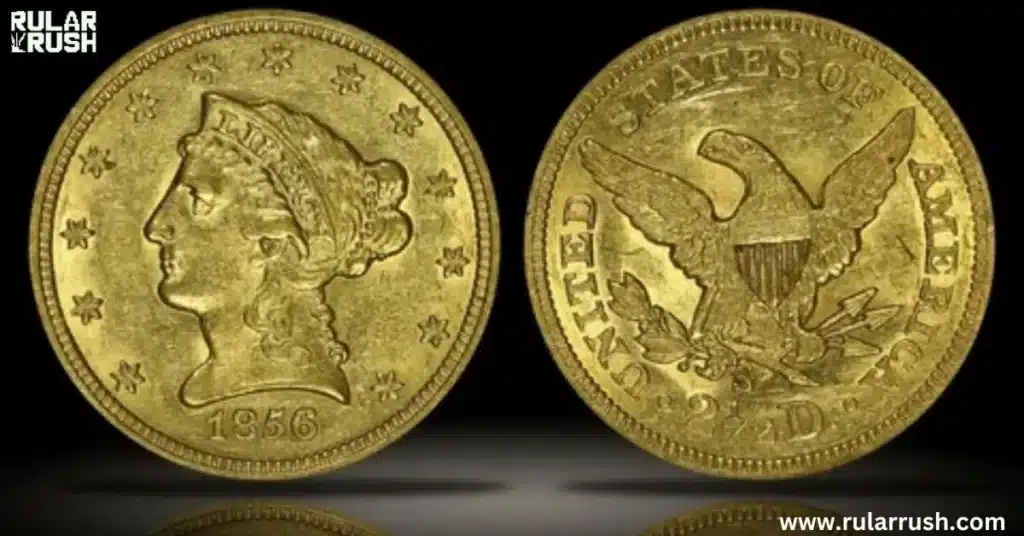How big is 5 cm? To visualize the extent of 5 centimeters, you must think of common daily items which bear similarity, for example, a USB flash drive, a matchstick, or a paper clip, which are all around five centimeters long. If you want to put them beside one another concerning object sizes, the diameter of the cap of a soda bottle is around 5 cm likewise, as well as the height of an American dollar coin. When you are using a ruler or measuring tool, 5 cm is very easy to spot as it is a standard measurement size. 5 cm is also equal to about 2 inches, which is another useful measurement conversion..
What is 5 cm in Inches?
To begin with, let’s discuss 5 cm in terms of another commonly used measurement: inches. 5 centimeters is equivalent to approximately 1.97 inches. This is just shy of 2 inches, which is a more familiar measurement for many people who use the imperial system. Understanding this conversion helps when comparing centimeters to other measurements in daily life.
How to Convert 5 cm to Inches:
- 1 cm = 0.3937 inches
- 5 cm = 5 x 0.3937 = 1.97 inches
This means that if you ever need to visualize 5 cm, you can think of it as just under 2 inches.
What Does 5 cm Look Like?
Visualizing measurements can often be challenging. But there are simple ways to estimate 5 cm in real life. Imagine a credit card, which is usually about 5 cm tall. Alternatively, the diameter of a soda bottle cap is also roughly 5 cm.
You can also look at everyday items like a matchstick or a paperclip. Both are around 5 cm in length, making them ideal objects for size comparison. In the next section, we will explore a list of common objects that measure 5 cm to make visualization easier.
12 Common Things That Are 5 Centimeters Long
Here’s a detailed list of everyday items that are typically 5 cm long:
1. USB Flash Drive

A USB flash drive is a perfect example of an object that measures 5 cm in length. The average size of these storage devices is usually around 5 cm, which makes them easy to carry around and a familiar size for most people.
2. Matchstick

The length of a regular matchstick (unlit) is approximately 5 cm. This is a great reference for understanding the size of small objects.
3. Two American Dollar Coins (Side by Side)

If you place two American dollar coins side by side, they’ll measure close to 5 cm. This is a great way to compare size, as most people are familiar with the size of coins.
4. Chalk Piece

In classrooms, chalk pieces are often around 5 cm in length. This is a very common object in educational settings, making it a great reference for visualizing small measurements.
5. Large Paperclip

A large paperclip measures about 5 cm. It’s easy to find in offices and homes, making it an accessible item for comparing 5 cm.
6. Credit Card Height

The height of a credit card is typically 5 cm, making it a convenient object for comparison. Most people carry one in their wallet, so it’s an easy reference point.
7. Sewing Needle

A sewing needle (the length of a standard household needle) is also around 5 cm. This is another practical object that can help you understand what 5 cm looks like.
8. Popsicle Stick (Half-Length)

A popsicle stick is usually around 10 cm long, so half of it measures approximately 5 cm. This is a fun item to visualize and also useful for crafting projects.
9. Key (House Key)

A house key is another object that typically measures 5 cm in length. If you take a standard key from your keyring, it will likely fall within this range.
10. Soda Bottle Cap Diameter
The diameter of a standard soda bottle cap is close to 5 cm. This size is easy to find and is commonly seen in daily life.
11. A Pen Cap

The cap of a ballpoint pen is often about 5 cm long, depending on the type of pen. This is another commonly found object that can help in visualizing 5 cm.
12. Belt Buckle (Small Size)

A belt buckle on a small to medium-sized belt is typically about 5 cm in height. This is another standard object size that can be used for comparison.
How Big Is 5 cm on a Ruler?
Now that we’ve looked at various everyday items measuring 5 cm, let’s discuss how to measure this length using a ruler. When you look at a standard ruler, you’ll see that 5 cm falls halfway between the 0 cm and 10 cm marks.
How to Measure 5 cm on a Ruler:
- Place the ruler on a flat surface.
- Find the 0 cm mark and the 10 cm mark.
- Measure the distance from 0 cm to 5 cm. You should see that 5 cm is exactly halfway between the 0 and 10 cm marks.
This method is a great way to practice ruler measurements and learn how to measure small objects accurately.
Practical Uses of 5 cm
Understanding 5 cm isn’t just useful for education or crafts—it’s also practical in real-world scenarios. For example:
- Crafting: When you need to make precise cuts for paper art or scrapbooking, knowing how big 5 cm is can help you measure effectively.
- Construction: In small DIY projects, such as building a birdhouse or organizing tools, you might need to measure 5 cm for accurate placement.
- Everyday Tools: When you’re cooking, a 5 cm measurement can come in handy. For example, if you’re chopping vegetables and need pieces that are 5 cm long, this knowledge is invaluable.
In all these cases, understanding how 5 cm compares to everyday objects makes it easier to estimate sizes and make decisions.
Comparing Sizes: 5 cm vs Other Common Measurements
To better understand the significance of 5 cm, it’s helpful to compare it to other common measurements.
| Measurement | Size in cm | Size in inches |
|---|---|---|
| 5 cm | 5 cm | 1.97 inches |
| 1 inch | 2.54 cm | 1 inch |
| 10 cm | 10 cm | 3.94 inches |
| 20 cm | 20 cm | 7.87 inches |
| 30 cm | 30 cm | 11.81 inches |
As you can see from the table, 5 cm is just a little less than 2 inches, which is helpful when estimating the size of small objects.
Educational Context
In the educational context, 5 cm plays a crucial role in teaching children how to understand and work with the metric system. Whether you’re learning about centimeters for the first time or reinforcing measurement concepts, using objects that are 5 cm long is an easy way to teach students about length measurements.
Teachers often use common objects as teaching aids, such as the ones listed above, to help students visualize measurements. By holding a matchstick or pencil and measuring it with a ruler, students can better grasp the concept of centimeter units.
How to Measure 5 cm Without Tools
If you don’t have a ruler handy, there are still ways to estimate 5 cm based on objects you already know. For example, as mentioned earlier, the height of a credit card or the length of a matchstick is around 5 cm, making them great for visual reference.
Additionally, you can estimate 5 cm by comparing it to other measurements, such as:
- The width of your index finger (typically about 2.5 cm).
- The diameter of a dime (about 1.8 cm).
- The size of a pen cap (about 5 cm).
This kind of estimation is useful when you don’t have access to practical measurement tools.
Conclusion
Now that you’ve explored 12 common things that are 5 cm long, you should have a clear understanding of this measurement size. Whether you’re using a ruler, visualizing with everyday objects, or comparing 5 cm to other standard measurement sizes, you can confidently estimate and measure 5 cm in various contexts.
From matchsticks and USB drives to credit cards and sewing needles, these 5 cm equivalents are everywhere, and knowing how to visualize measurements in centimeters can make life a little easier. Keep practicing with common objects, and soon enough, you’ll be able to recognize 5 cm without even needing a ruler!
Related article : https://rularrush.com/how-big-is-4-cm/

Elizabeth is an experienced blogger at “Rular Rush,” specializing in delivering precise and insightful content on various measurement topics. With a passion for simplifying complex concepts, she brings clarity and depth to each post, making technical information easy to understand for readers worldwide.






